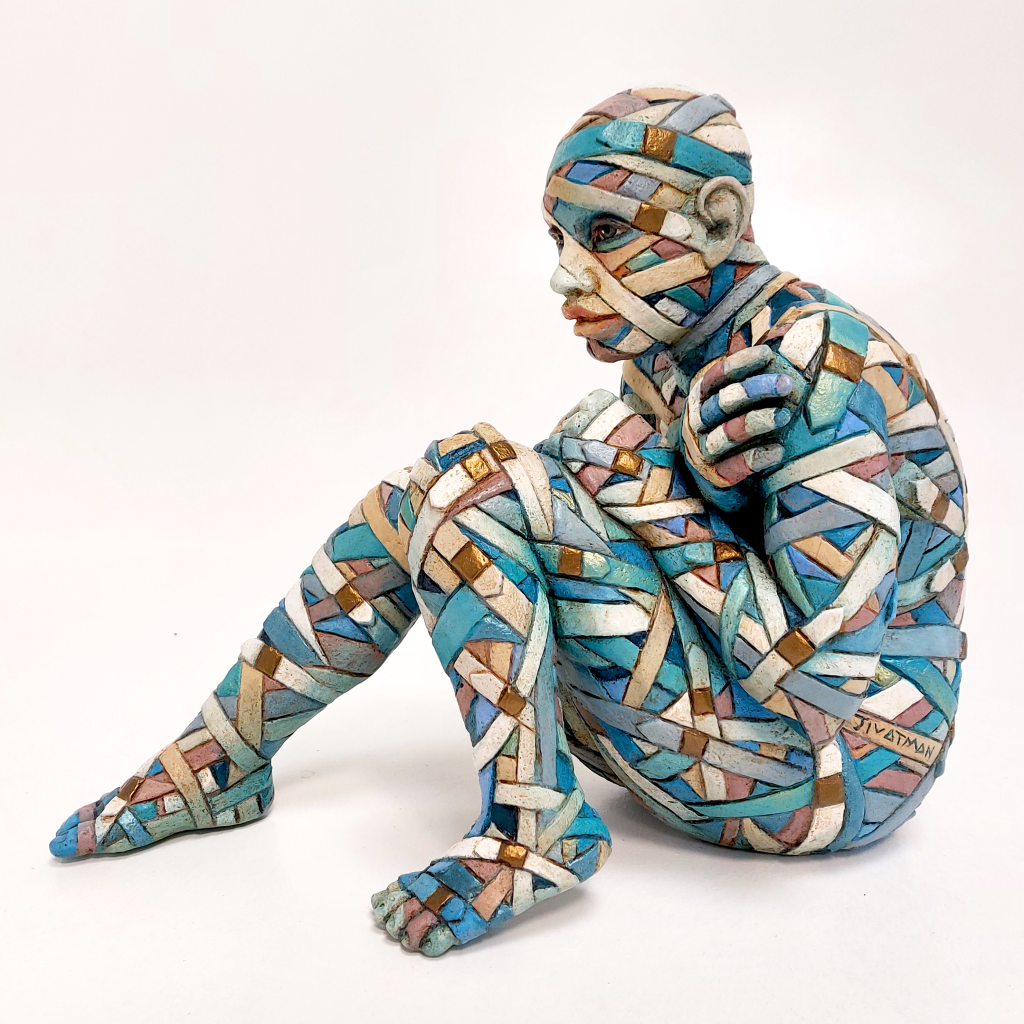
I.F.A.G.


Jivatman
Rabarama
+ Follow
Hand-painted bronze
37.5x48x25 CM
14.76x18.89x9.84 IN
This work is part of a limited edition set.
SOLD
This work is part of a cycle of sculptures whose surface is strewn with belts. The whole figure is wrapped in it, and it seems to be blocked by these: the belts are a metaphor for all those constructs internal and external to us, such as genetics, traditions, culture and all the teachings that derive from the environment in which we are born and we live. Each of these things binds us to predetermined actions, following a predetermined destiny. However, through inner reflection and meditation, in search of our energy and self-awareness, we will be able to change our thinking and consequently our actions. By abandoning the routine and all those behaviors that we believe to be useful to us, but which ultimately prove harmful, we will be able to free ourselves from the belts that hold us in place, simply by opening the buckle and letting fall, metaphorically, what was an impediment. On the back there is the syllable RA, which refers both to the artist's pseudonym and to the Egyptian divinity of the Sun, connected to energy and life. Last but not least, the title of the work, Jivatman: the term "jiva" in Sanskrit has two meanings, in fact it means "living creature" and also means "individualized spirit" that supports the living being in the course of its incarnations. When used in the second meaning, the full term becomes "jivatman" where Atman is the Spirit or the Eternal Self of the living being. The concept expresses the eternal particle of the Divine, since the multiple Divine manifests itself as the Self or individualized spirit of the created being. We are all particles of pulsating energy, belonging to a cosmic Whole much larger than us, to which however we tend naturally and to which it will be possible to reach only after having obtained the complete consciousness of our original being.
This work is part of a cycle of sculptures whose surface is strewn with belts. The whole figure is wrapped in it, and it seems to be blocked by these: the belts are a metaphor for all those constructs internal and external to us, such as genetics, traditions, culture and all the teachings that derive from the environment in which we are born and we live. Each of these things binds us to predetermined actions, following a predetermined destiny. However, through inner reflection and meditation, in search of our energy and self-awareness, we will be able to change our thinking and consequently our actions. By abandoning the routine and all those behaviors that we believe to be useful to us, but which ultimately prove harmful, we will be able to free ourselves from the belts that hold us in place, simply by opening the buckle and letting fall, metaphorically, what was an impediment. On the back there is the syllable RA, which refers both to the artist's pseudonym and to the Egyptian divinity of the Sun, connected to energy and life. Last but not least, the title of the work, Jivatman: the term "jiva" in Sanskrit has two meanings, in fact it means "living creature" and also means "individualized spirit" that supports the living being in the course of its incarnations. When used in the second meaning, the full term becomes "jivatman" where Atman is the Spirit or the Eternal Self of the living being. The concept expresses the eternal particle of the Divine, since the multiple Divine manifests itself as the Self or individualized spirit of the created being. We are all particles of pulsating energy, belonging to a cosmic Whole much larger than us, to which however we tend naturally and to which it will be possible to reach only after having obtained the complete consciousness of our original being.